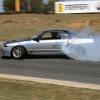Twin Scroll Vs Single
Announcements
-
Similar Content
-
Latest Posts
-
What mods are done to the car? By driving in traffic, does it die while moving, say at 50kmh? Or its when you're sitting idling it wants to die, or when idling and you go to accelerate? When you're idling, how long is it normally idling for time wise before it starts to miss and sputter?
-
By thejacksta88 · Posted
Hi mate, It starts doing this when driving through normal city traffic. Will be when I go to accelerate or if I stop and let it idle sometimes it will shut off. -
By TurboTapin · Posted
And have one of the kids hand them over to the front while on road trips haha -
By TurboTapin · Posted
Actually it's the other way around, winter is when we do the most work on our cars! Best time to do big jobs as they can't be driven. I have a winch in the garage as well to push it out and pull it in when the motors out. I've just been slacking due to the 2 hours of sleep a night I've been getting :p -
It's funny how you guys in the Northern Hemisphere stop working on your cars because of the cold. Here in Aus we stop working on them when it gets too hot! Even with the split system A/C running my shed still sits at around 40 degrees (celcius). I drip forehead sweat over everything! Should see some good results with E85 (and proper timing! ).
-








Recommended Posts
Create an account or sign in to comment
You need to be a member in order to leave a comment
Create an account
Sign up for a new account in our community. It's easy!
Register a new accountSign in
Already have an account? Sign in here.
Sign In Now